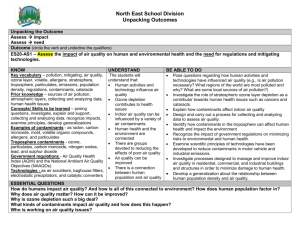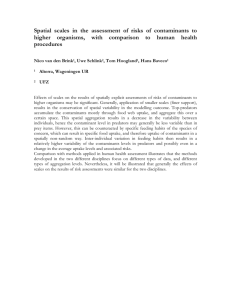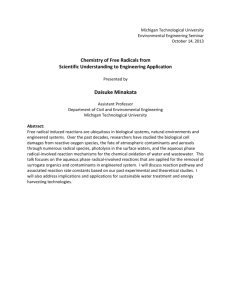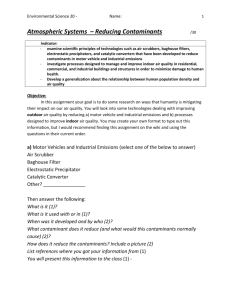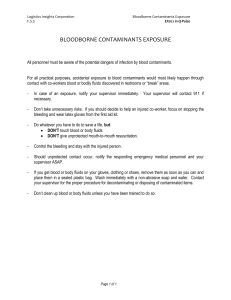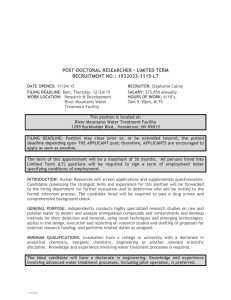Water Pollution lesson plan by Spencer Young
advertisement
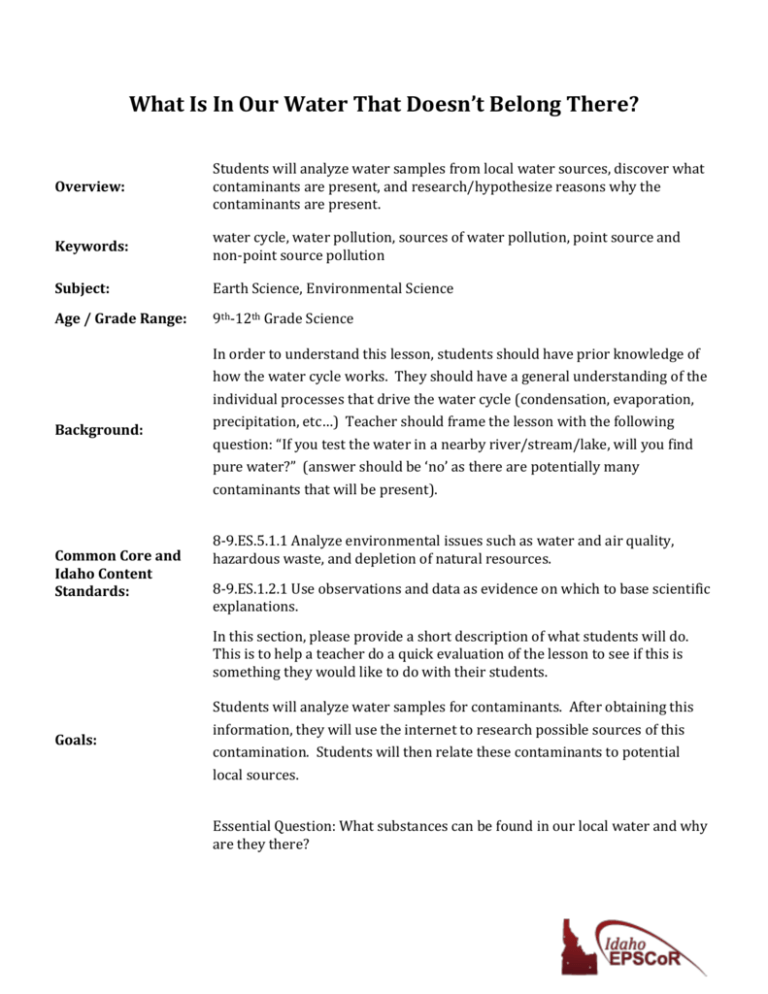
What Is In Our Water That Doesn’t Belong There? Overview: Students will analyze water samples from local water sources, discover what contaminants are present, and research/hypothesize reasons why the contaminants are present. Keywords: water cycle, water pollution, sources of water pollution, point source and non-point source pollution Subject: Earth Science, Environmental Science Age / Grade Range: 9th-12th Grade Science Background: Common Core and Idaho Content Standards: In order to understand this lesson, students should have prior knowledge of how the water cycle works. They should have a general understanding of the individual processes that drive the water cycle (condensation, evaporation, precipitation, etc…) Teacher should frame the lesson with the following question: “If you test the water in a nearby river/stream/lake, will you find pure water?” (answer should be ‘no’ as there are potentially many contaminants that will be present). 8-9.ES.5.1.1 Analyze environmental issues such as water and air quality, hazardous waste, and depletion of natural resources. 8-9.ES.1.2.1 Use observations and data as evidence on which to base scientific explanations. In this section, please provide a short description of what students will do. This is to help a teacher do a quick evaluation of the lesson to see if this is something they would like to do with their students. Goals: Students will analyze water samples for contaminants. After obtaining this information, they will use the internet to research possible sources of this contamination. Students will then relate these contaminants to potential local sources. Essential Question: What substances can be found in our local water and why are they there? Objectives: Each objective identifies the student learning that will take place and is measurable and observable. Lesson may include integration across several content areas as appropriate. Objectives may be stated in the form of critical questions students should be able to answer. Students will be able to name 3 contaminants found in their local water supply. Students will be able to discuss possible reasons that the contaminants are present and determine the level of risk that various contaminants present. Materials: Internet and/or library access, and suggested sources of information tables to record testing results Contaminated water for testing. This should be from a nearby lake, stream, river, or ocean. Commercial water quality test kit table to record search results on sources of contamination Set up: Have water samples prepared ahead of time, unless you are planning to collect them as part of a class field trip. Try to collect samples from nearby lakes, streams, rivers, etc… Determine how many different sources and how many samples of each that you would like to use. Time/ Duration: This activity will generally take 3 full 45-minute periods to complete. 1 for testing, 1 for research, and one for producing the final project. Introduction (Engage): I recommend showing a brief video to frame the lesson and generate excitement about the activity. Here is one example, but there are many possible ways to do this. This particular clip has a dark tone and is rather extreme, but you get the idea. https://www.youtube.com/watch?v=IG3thzNUIdY Lead discussion to recap the main points of how the water cycle works. Review important vocabulary. Questions for lead-in discussion: 1. If you test the water in nearby streams, groundwater, lakes, will you find pure H2O? (no) 2. What are some of the things you might find? 3. Today we will be testing that prediction. 1. Students work in pairs or small groups. 2. Test for contaminants using available equipment. 3. Students record results 4. Students go to computer lab or library for access to Internet and other information in texts, journals, and pamphlets. Activity (Explore): 5. Assign each pair or group of students to research a certain number of possible sources of contamination to determine what those sources contribute. 6. Students record the source, types of pollution, point source or nonpoint source, and source of information in table 2. 7. Provide possible places to find inform Explanation: Introduce the concepts of point source and non-point source pollution. Offer examples of each. Lead classroom discussion of what students found. Elaboration: Are some contaminants contributed by more than one source? (yes) Are more contaminants point source or non-point source? Lead discussion to whether all contaminants are harmful. Lead discussion to what sources of contaminants are present in local area Evaluation/ Assessment: Student’s will be evaluated on the creation of a final product (poster) that depicts their water source and illustrates the sources and methods that led to at least 3 of the contaminants they discovered. The poster should outline possible sources of contamination, how that contaminant entered the water, and what possible hazards the contaminants present to humans and/or wildlife. Additional resources: http://www.gdrc.org/uem/water/water-pollution.html http://www.scorecard.org/ http://www.scorecard.org/env-releases/def/cwa-cause-classdef.html#metals http://www.cee.vt.edu/program_areas/environmental/teach/gwprimer/gwp rimer.html http://www.epa.gov/ Family/ Community Connections: Use the above mentioned web resources. Talk to local officials such as City Superintendent of Public Works, irrigation companies, dam operators, Departments of Fish and Game, farmers.


